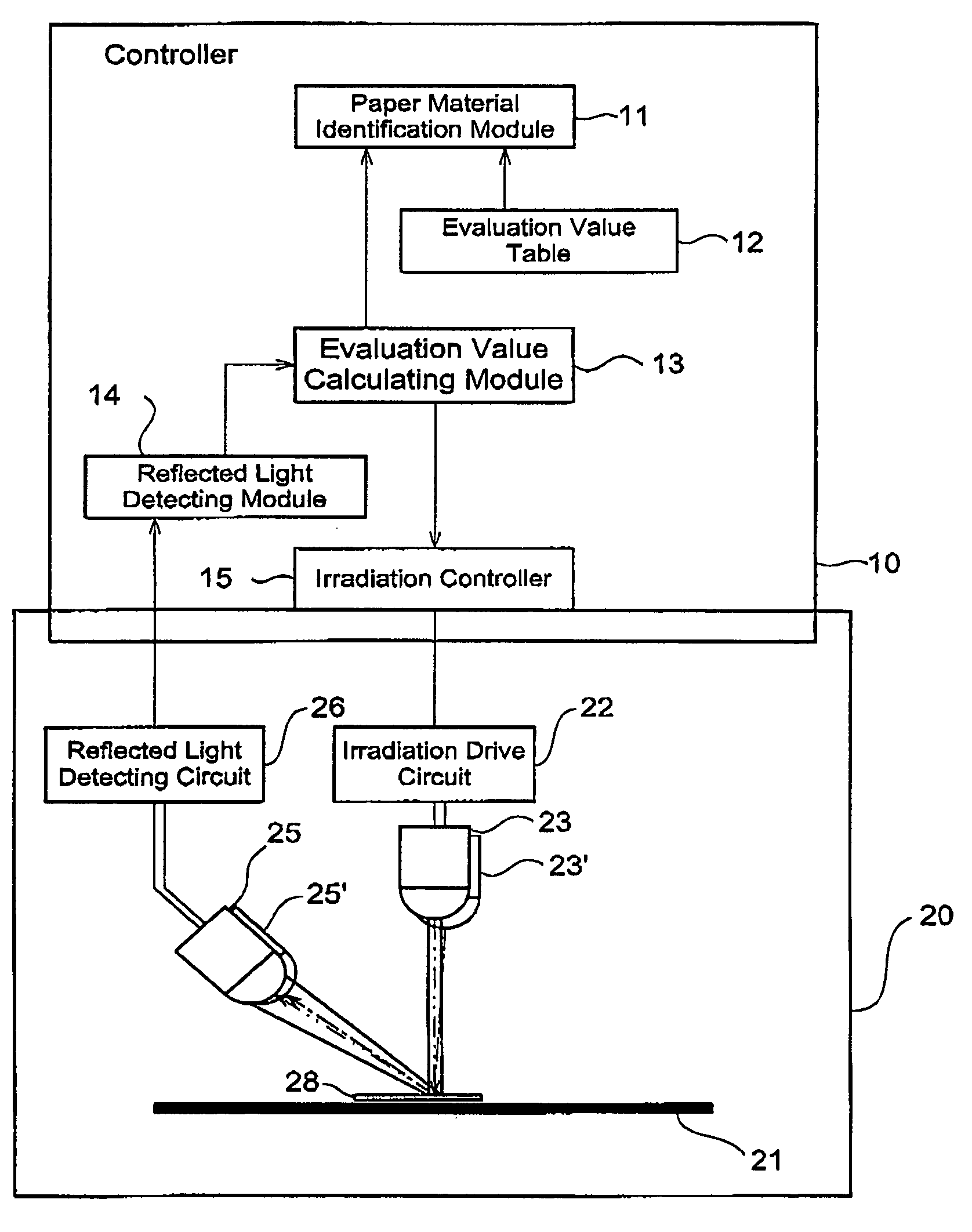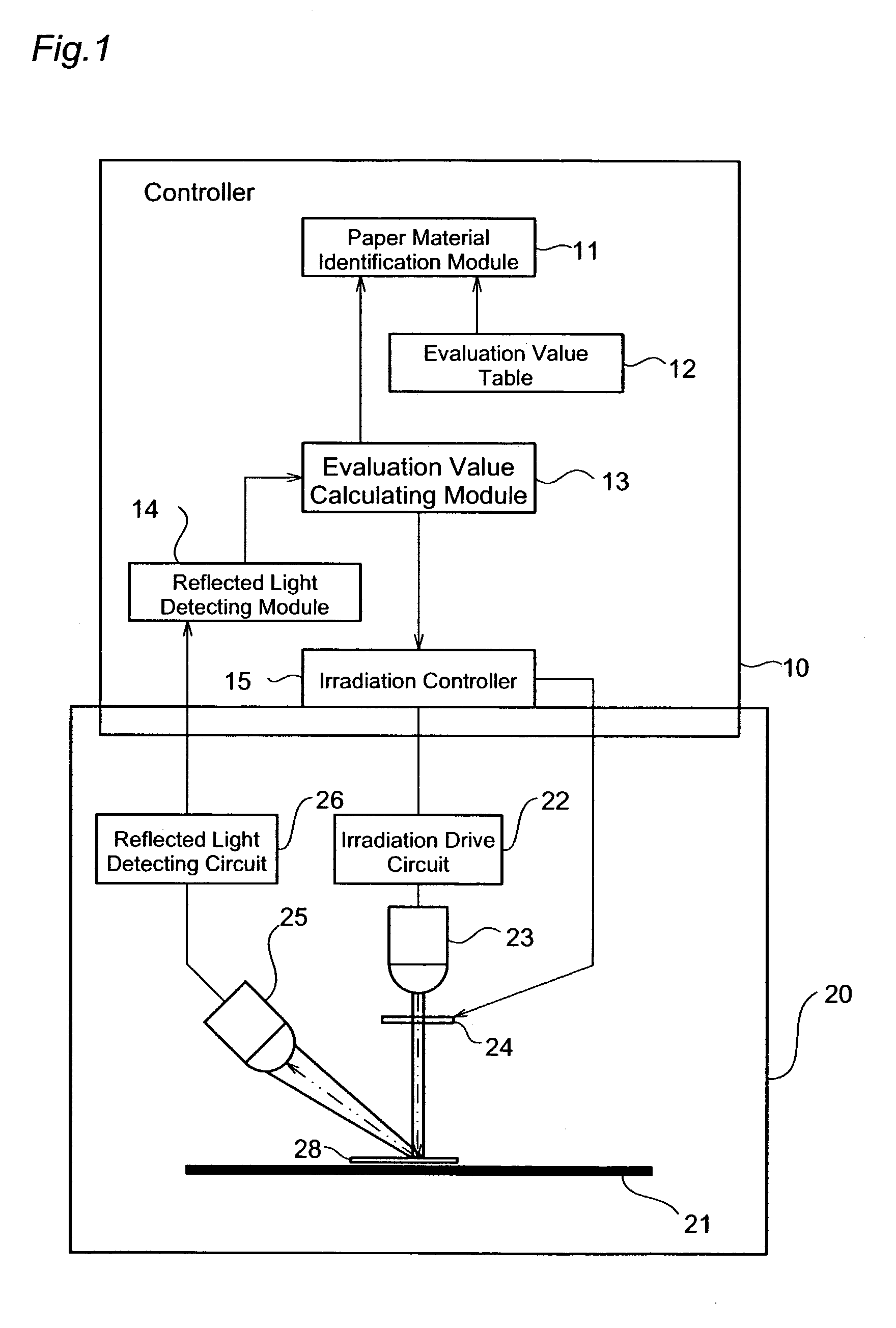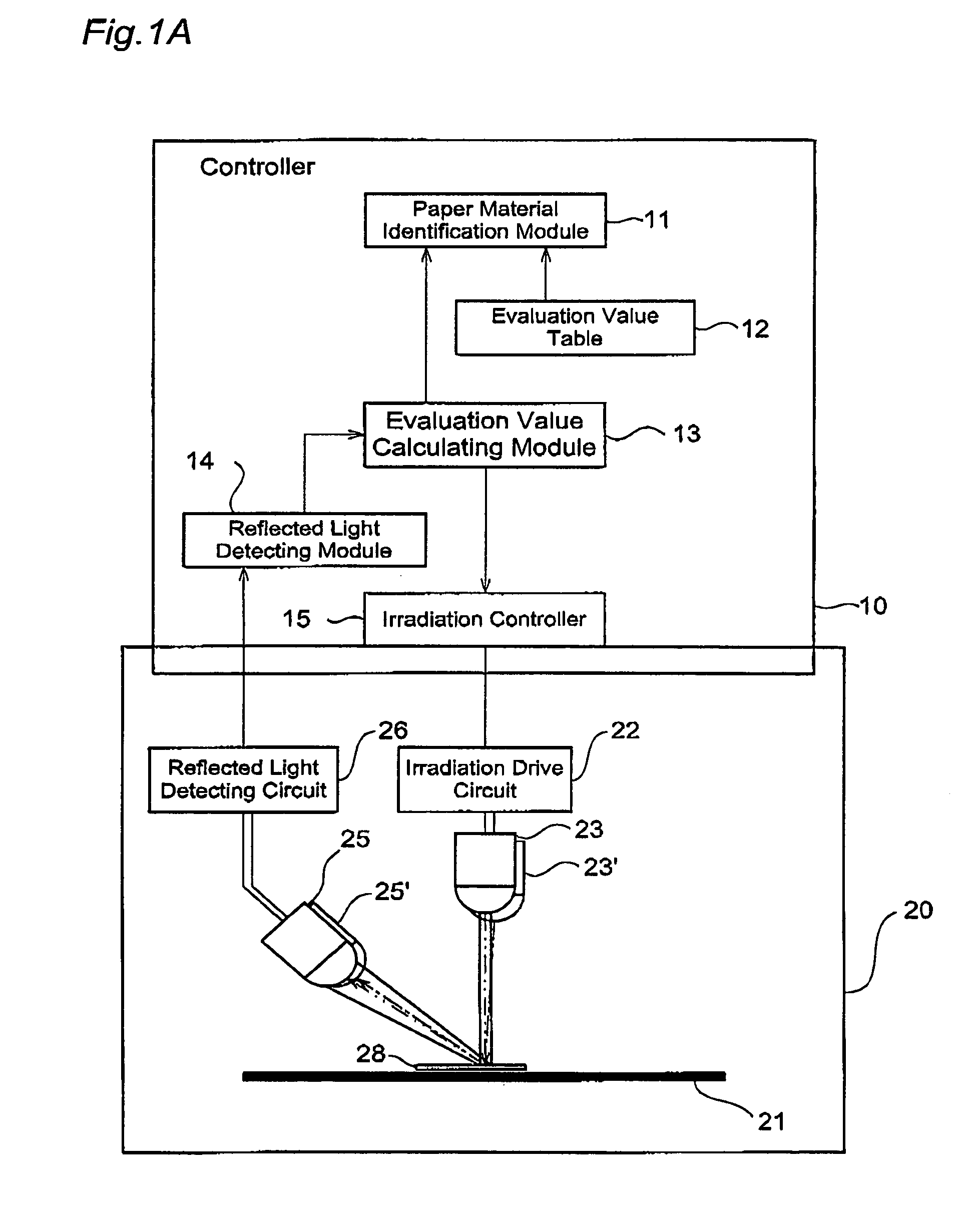Paper quality discriminating machine
a paper quality and discriminating machine technology, applied in the field of paper quality discriminating machines, can solve the problems of insufficient misjudgments about paper materials, and inability of skilled artists to achieve so as to reduce the influence of absorbance, stable identification of paper materials, and the effect of identifying paper materials
- Summary
- Abstract
- Description
- Claims
- Application Information
AI Technical Summary
Benefits of technology
Problems solved by technology
Method used
Image
Examples
Embodiment Construction
[0023]Some modes of performing the present invention are discussed below as preferred embodiments.
A. General Construction
[0024]FIG. 1 is a schematic of the structure of a paper material identifying machine. The paper material identifying machine comprises an optical unit 20 and a controller 10.
[0025]The optical unit 20 includes a light source 23 in order to irradiate irradiated light that is used for identifying material of sheets, such as banknotes. In this embodiment, the identification is performed using two different kinds of irradiated light. The spectrum of the first kind of the irradiated light, the center wavelength of which is 370 nm, distributes within the range of 370±10 nm (Hereinafter referred to as “short-wavelength light”). The spectrum the second kind of the irradiated light, the center wavelength of which is within the range of 420 to 1000 nm, distributes within the range of ±20 nm from the center wavelength(Hereinafter referred to as “long-wavelength light”). In ei...
PUM
| Property | Measurement | Unit |
|---|---|---|
| Nanoscale particle size | aaaaa | aaaaa |
| Nanoscale particle size | aaaaa | aaaaa |
| Wavelength | aaaaa | aaaaa |
Abstract
Description
Claims
Application Information
 Login to View More
Login to View More - R&D
- Intellectual Property
- Life Sciences
- Materials
- Tech Scout
- Unparalleled Data Quality
- Higher Quality Content
- 60% Fewer Hallucinations
Browse by: Latest US Patents, China's latest patents, Technical Efficacy Thesaurus, Application Domain, Technology Topic, Popular Technical Reports.
© 2025 PatSnap. All rights reserved.Legal|Privacy policy|Modern Slavery Act Transparency Statement|Sitemap|About US| Contact US: help@patsnap.com



